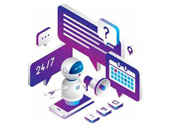|
|
|
|
NEC, Telcos Exploring Deployment of OpenRAN
 Japan’s NEC Corporation said it is working closely with Indian telecom operators to explore commercial deployment of Open Radio Access Networks (OpenRAN) technology once the latter roll out 5G networks.
Japan’s NEC Corporation said it is working closely with Indian telecom operators to explore commercial deployment of Open Radio Access Networks (OpenRAN) technology once the latter roll out 5G networks.
“There are a couple of operators that are slightly ahead in both ambition and in terms of aggression… ORAN will definitely be a challenger technology and can possibly change the entire landscape of how infrastructure is operated and maintained in the country,” NEC India CEO Aalok Kumar told ET.
He said Indian telcos are exploring ways to optimise investments and compatibility of the new technology with their legacy networks.br>
Bharti Airtel, Vodafone Idea and Reliance Jio Infocomm are increasingly looking to expand their telecom gear supplier options beyond traditional vendors using OpenRAN technology. Adoption of OpenRAN will help them cut network costs and bring in more customisation as they go 5G.
NEC Corp recently set up an OpenRAN lab in India. (Source: Economic Times)
|
KT Corporation leaps ahead with Asia Pacific’s first virtualized headend
 London – December 8, 2020 – Synamedia, the world’s largest independent video software provider, today announced that KT Corporation, South Korea’s largest telecommunications service provider, will implement the first virtualized headend in Asia Pacific for its Olleh TV IPTV service. London – December 8, 2020 – Synamedia, the world’s largest independent video software provider, today announced that KT Corporation, South Korea’s largest telecommunications service provider, will implement the first virtualized headend in Asia Pacific for its Olleh TV IPTV service.
This is the first win for Synamedia with KT’s IPTV business. Following a competitive tender, KT selected Synamedia’s Converged Headend to deliver a virtualized full stack solution for the delivery of end-to-end IPTV workflows. Synamedia’s expertise in applying containerization and orchestration techniques and technologies to video workflows will transform KT’s IPTV business, making it possible to deploy and launch new formats, channels and services cost effectively in minutes rather than weeks. Synamedia’s impressive video network roadmap was also a factor in the decision.
Deployed on premise in KT’s data center, Synamedia’s cloud-agnostic Converged Headend includes virtualized Digital Content Manager (vDCM) and Video Service Manager. The fully automated solution, which can also be deployed in the cloud or in a hybrid environment, features the industry’s broadest functionality in a single solution. It includes: acquisition and multiplexing, encoding, transcoding, ad insertion, packaging, content protection, origin services and reliable IP transport.
“KT has a reputation for innovation and market leadership and our Converged Headend provides the video infrastructure springboard it needs to stay ahead both now and in the longer term. With our fully virtualized IPTV infrastructure, KT can adapt and innovate at pace, and retain and grow its IPTV subscriber base with highly engaging services,” said Sue Couto, Executive Vice President and General Manager of Asia Pacific and Latin America at Synamedia.
Synamedia’s video network portfolio powers premium quality broadcast and broadband video for more than 1,000 operators worldwide and 100 million daily viewers. Its video distribution, processing and delivery services and solutions create compelling live multi-screen experiences, enable software-defined video processing and unify operations. The award-winning portfolio also touts a cloud-ready, converged broadcast and broadband end-to-end ATSC 3.0 offering and low latency solutions for live video. Its virtualized DCM features live transcoding to multiple bit rates and formats, scalable video functions and best-in-class video quality all aimed to deliver infinite entertainment.
|
Apple, Google bring Covid-19 contact-tracing to three billion people
 In mid-May, the companies will add the ability for iPhones and Android phones to exchange anonymous information via apps run by public health authorities
In mid-May, the companies will add the ability for iPhones and Android phones to exchange anonymous information via apps run by public health authorities
Apple Inc and Google unveiled a rare partnership to add technology to their smartphone platforms that will alert users if they have come into contact with a person with Covid-19. People must opt in to the system, but it has the potential to monitor about a third of the worlds population.
The technology, known as contact-tracing, is designed to curb the spread of the novel coronavirus by telling users they should quarantine or isolate themselves after contact with an infected individual.
The Silicon Valley rivals said on Friday that they are building the technology into their iOS and Android operating systems in two steps. In mid-May, the companies will add the ability for iPhones and Android phones to exchange anonymous information via apps run by public health authorities. The companies will also release frameworks for public health apps to manage the functionality.
This means that if a user tests positive for Covid-19, and adds that data to their public health app, users who they came into close proximity with over the previous several days will be notified of their contact. This period could be 14 days, but health agencies can set the time range.
The second step takes longer. In the coming months, both companies will add the technology directly into their operating systems so this contact-tracing software works without having to download an app. Users must opt in, but this approach means many more people can be included. Apples iOS and Googles Android have about three billion users between them, over a third of the worlds population.
The pandemic has killed more than 100,000 and infected 1.63 million people. Governments have ordered millions to stay home, sending the global economy into a vicious tailspin. Pressure is building to relax these measures and get the world back to work. Contact-tracing is a key part of this because it can help authorities contain a potential resurgence of the virus as people resume regular activities.
Still, this technology is controversial because it involves sharing sensitive health information from billions of people via mobile devices that are constantly broadcasting their location. Some politicians and regulators have been warning that citizens privacy should be protected.
We caution that actions taken to contain spreading of coronavirus must also preserve the right to privacy held by each and every American, members of the House Freedom Caucus, a group of conservative Republicans in the House of Representatives, wrote in a letter to United States (US) President Donald Trump. Googles colossal stores of data on daily movements of Americans, coupled with the might of local, state, and federal governments is an alarming prospect.
Apple and Google stressed on Friday that their system preserves users privacy. Consent is required and location data is not collected. The technology also wont notify users who they came into contact with, or where that happened. The companies said they cant see this data either, and noted that the whole system can be shut down when needed.
Aside from privacy and trust concerns, challenges include the availability of widespread and free testing to complement the app, as well as access to mobile phones and other wireless devices, according to the American Civil Liberties Union.
We must be realistic that such contact tracing methods are likely to exclude many vulnerable members of society who lack access to technology and are already being disproportionately impacted by the pandemic, Jennifer Granick, ACLUs surveillance and cybersecurity counsel, said in a statement.
A rare partnership
For Apple and Google, such a close partnership between these long-time rivals is extremely rare. The technology giants have competed in smartphone operating systems, app stores, media services, and voice-recognition technology for years -- while trading barbs over the privacy of each others platforms.
However, both companies have been under pressure to use their prodigious resources to help fight the pandemic.
All of us at Apple and Google believe there has never been a more important moment to work together to solve one of the worlds most pressing problems, the companies said in a joint statement.
Their system uses bluetooth, a standard way for most mobile devices to communicate with each other. Apple and Google shared a theoretical example to explain how it works.
Two people meet to chat for a few minutes, and in the background via bluetooth their smartphones exchange anonymous identifiers to register that they have been in contact. These digital keys change every 15 minutes or so and remain on these peoples devices to preserve privacy.
Several days later, one of these individuals is diagnosed with Covid-19. The person enters the results into a health-agency app on their phone. The system then asks for this users consent. If granted, the persons smartphone sends a record of the other mobile devices that have been in close proximity during the previous days. This information is temporarily stored in a remote computer server for about 14 days.
Meanwhile, the other persons phone checks the server periodically to see if any identifier keys have been associated with a positive Covid-19 diagnosis. The phone downloads all positive keys and matches it anonymously to the key belonging to the individual from the original meeting days earlier. This sends a notification to the other persons phone with information from health agencies about how to quarantine or self-isolate.
The contact-tracing technology isn’t the first step against Covid-19 for either company. Google launched an information website in March, while Apple has released its own screening tools for iPhone users. Apple has also donated over 20 million masks to health-care workers and has designed face shields, and Verily, a unit of Google parent Alphabet Inc, is running virus-testing sites in some parts of California.
Other organisations are also working on contact-tracing. Researchers at the Massachusetts Institute of Technology (MIT) earlier this week announced plans for a similar system. Some countries and third-party developers have also tried implementing contact-tracing on phones, but they have faced privacy and connectivity issues that the new system is designed to avoid. (Source: The Hindu Businessline)
|
eGaming Cos have a Field Day as Virus Keeps Millions Home
 ROUND ONE Gamers from metros and tier-II cities opt for multi-player games as they look for ways to engage with friends and family remotely ROUND ONE Gamers from metros and tier-II cities opt for multi-player games as they look for ways to engage with friends and family remotely
More people are turning to online gaming platforms to pass time amid the ongoing 21-day nationwide lockdown put in place to counter the Covid-19 virus outbreak.
Paytm First Games reported a 200% increase in users in the past month as people stayed indoors. It now has over half a million daily active gamers spending 30- 45 minutes on the platform. “As malls, movie theatres and popular hangout options shut down temporarily…online gaming is picking up as a popular option for stay-at-home entertainment…,” said Sudhanshu Gupta, COO - Paytm First Games.
Many of its users are from metros, but quite a few new ones are joining in from tier-II, tier-III towns and beyond, he said.
E-sports tournament platform Gamerji has reported an almost 50% spike in new registrations. The platform, which used to get 43,000 new registrations on average each month, has enrolled 72,000 in the two weeks since the lockdown.
“Most of the players are from urban areas, between the ages of 16 and 35,” said Soham Thacker, founder of Gamerji.
Most online games, including skill-based ones like online poker or rummy, and others like PUBG and Clash of Duty are popular, with people opting for multiplayer games as they look for ways to engage with friends remotely. Even games like Carrom or Ludo are attracting more users, with private multi-player modes becoming more popular. WinZo Games, which focuses on tier-II to tier-V towns, has reported game play between friends double over the last two weeks. “Activity on the social features of the app, such as video and audio usage during game play, has also doubled,” said Saumya Singh Rathore, cofounder, WinZO Games.
Not all are, however, benefiting from this boom. Platforms built around fan engagement during live matches or tournaments suddenly find that they have nothing on which to build engagement. The spike in demand has led to its own share of problems for companies. “The surge was very sudden. Starting the weekend of March 15, there was a 3x increase in game plays and 30% higher traffic... this is growing every single hour,” said Rathore of WinZo Games. The company has been working with cloud-storage provider Amazon Web Services to scale up servers to handle the high traffic and ensure users are not impacted. (Source: Economic Times)
|
How Kaspersky’s blockchain solution makes online voting a secure process
 Online voting in academic institutions, businesses, and general elections is slowly becoming vogue. While it offers the advantage of voting remotely, saving the hassle of travel and instantaneous counting of votes, online voting poses a challenge when it comes to the security of data. Any leakage of data and subsequent tampering could create a lot of problems. Online voting in academic institutions, businesses, and general elections is slowly becoming vogue. While it offers the advantage of voting remotely, saving the hassle of travel and instantaneous counting of votes, online voting poses a challenge when it comes to the security of data. Any leakage of data and subsequent tampering could create a lot of problems.
Cyber security solutions company Kaspersky says blockchain-based solutions can come to the rescue in such situations. Blockchain technology, which promises secure, block-by-block incorruptible transactions, is helping in building use cases for land records, banking transactions, and educational records.
Target server
Polys, a project from the Kaspersky Innovation Hub, has developed the prototype of a secure online voting platform, powered by blockchain technology. Targetted at businesses, universities, and political parties, the prototype of Polys Voting Machine lets all votes, cast at the designated polling stations or on personal digital devices, transmitted to the target server in a secure way.
“The Polys Voting Machine has been created to work on distributed ledger technology. All information related to votes is stored in a decentralised manner on several blockchain nodes,” said Roman Aleshkin, head of product at Polys.
The machine allows the voting organisers to store the data on several computers, making it difficult for hackers to break into them and tamper with the data. “To use one of the machines, voters would need to authenticate themselves with documents to prove their identity. Next, they would receive a unique QR code (or other token),” he said.
“Via this QR code, a person can also check on a special web application that his or her vote was registered in the blockchain, but their name and choice will not be stored in the blockchainto prevent tracing it to a specific individual,” he said.
To allow audits and recounts, a special Polys Printer can be connected to this distributed ledger, providing an accurate paper trail. The automatic count function significantly reduces staff and resource costs for organisers. (Source: The Hindu Businessline)
|
Haier launches 83 products, some AI- and IoT-powered
 Home appliances and consumer electronics brand Haier has launched 83 products in different categories, including some powered by Artificial Intelligence and Internet of Thing solutions. Home appliances and consumer electronics brand Haier has launched 83 products in different categories, including some powered by Artificial Intelligence and Internet of Thing solutions.
“The home appliances industry has entered the era of IoT and new technologies with customers looking for products that provide a connected and a holistic new age experience,” Eric Braganza, President of Haier Appliances India, said, after unveiling the new range of products.
The new range included refrigerators, air-conditioners, washing machines and LED TVs.
With the expansion of its product portfolio to smart home solutions, the brand expects to continue its high growth momentum in different categories. The firm, which has a network of 20,000 dealers, has 539 service centres covering 19,000 pin codes across the country.
On Saturday, it showcased its AI-enabled Smart TVs and smart refrigerators and WiFi-enabled washing machines along with other products.
With an eye on the upcoming summer season, Haier has lined up 29 new air conditioners to cater to diverse needs of its customers. (Source: The Hindu Businessline)
|
HCL Technologies expects strong demand across sectors in coming quarters
 IT services firm HCL Technologies is betting on strong demand across sectors, including manufacturing and retail, to continue its growth momentum in the coming quarters. IT services firm HCL Technologies is betting on strong demand across sectors, including manufacturing and retail, to continue its growth momentum in the coming quarters.
The company, which posted 15.5 per cent rise in revenue in the December quarter, is also seeing strong growth in the European and US markets.
“Our pipeline is very strong. And we’re also pretty confident of the conversion rates. As we speak, we’re looking large deals. So overall, I’m positive,” HCL Technologies President and CEO C Vijayakumar told PTI.
He added that sectors like manufacturing, retail and CPG (consumer packaged goods) look quite strong.
“On financial services, we are a little bit cautious because European banks...there is still some decline in spends in some of our customers,” he said, adding that Europe overall is performing well for the company. On the back of the strong growth, the company has narrowed its revenue growth outlook to 16.5-17 per cent for 2019-20 in constant currency terms from its previous forecast of 15-17 per cent top line growth.
In the December quarter, growth was led by manufacturing at 38.1 per cent year-on-year, energy, utility and public services at 31.3 per cent, retail CPG at 16.9 per cent, financial services at 16.8 per cent, and telecom and media at 13.6 per cent. In terms of geographies, the US, Europe and Rest of World (RoW) experienced double digit growth on a year-on-year basis in constant currency.
RoW lead the growth with 27.3 per cent year-on-year growth in constant currency. Vijayakumar pointed out that the company is also expanding its presence in geographies like Canada, South Africa and Middle East.
Talking about deal sizes, he said, “I think, in 2019, we had a lot of large deals where billion dollar deals were coming”. “I don’t see that but maybe still quite large, say $ 200 to 500 million,” he added.(Source: The Hindu Businessline)
|
This Tech may Replace Swipe Machines
 MERCHANTS CAN PROCESS small-ticket payments made via contactless cards using their smartphones. The merchant at your neighbourhood store (kirana) may soon be able receive small-ticket payments on his smartphone for purchases you make using contactless cards.
MERCHANTS CAN PROCESS small-ticket payments made via contactless cards using their smartphones. The merchant at your neighbourhood store (kirana) may soon be able receive small-ticket payments on his smartphone for purchases you make using contactless cards.
This is a step up from using hefty Point of Sale (POS) devices.
Global payments major Visa is set to enable POS operators and fintech companies to upgrade merchant smartphones with NFC (Near Field Communication) and RFID (Radio Frequency Identification) technology to accept digital transactions from contactless cards.
The technology, called ‘Tap to Phone’, will allow merchants to process payments made through contactless cards directly on their smartphones without having to use the swipe machines.
This is expected to reduce both the cost of setting up the infrastructure and handling these intermediary devices, used to process small-ticket retail transactions instantly.
“We are working with both large players and nimble fintech companies as well. The pilots have been successfully conducted. We will see this trend pretty much immediately, say from January or February,” T R Ramachandran, Group Country Manager, India and South Asia, Visa told ET in an exclusive interaction. The US-based payments network operator said it was in the process of issuing certifications on security standards for the fintech companies and banks that will deploy these devices.
“It is estimated that there are nearly 60 to 80 million MSME outlets in the country, but there are less than 5 million POS machines in operation. We should not let the capex — which is $150 to $200 — hinder the rollout of these merchant discount devices,” said Ramachandran.
The HCE or Host Card Emulator technology is already being used by large players such as Samsung, Apple, and SBI Cards to create digital wallets linked to their cards. This enables customers to make instant payments at merchant points without physically using their cards.
The new technology will ‘reverse engineer’ the same process to make the smartphones the receiver of payments instead of transmitters, Ramachandran said.
“There are several use cases where smartphones with HCE (Host Card Emulator) technology can function as cards to transfer funds. We’re thinking if they can transfer, they can also receive,” he explained. As per the latest Reserve Bank of India data, there are about 835 million debit cards and 52.5 million active credit cards. The number of POS devices has been pegged at 4.6 million as of September 2019.
A contactless card uses a chipbased technology to complete transactions through a secure radio interface. These transactions, unlike traditional swipe transactions, does not require a customer to complete a two-factor authentication process involving a secure pin or One Time Password (OTP) to make payments under ₹2,000, as per the RBI’s current mandate. (Source: Economic Times)
|
Tech Services Firms Look to Turn a Page with Content Moderation
 Firms see a sharp rise in opportunities amid increasing demand from social networking cos, others. Some large technology services companies and their boutique counterparts are betting big on the content moderation services business, analysts have said.
Firms see a sharp rise in opportunities amid increasing demand from social networking cos, others. Some large technology services companies and their boutique counterparts are betting big on the content moderation services business, analysts have said.
This is a business that IT services provider Cognizant said recently it was exiting, pushed by the challenges of dealing with stressed employees and its new strategy.
Content moderation work involves tasks like filtering a video, image or text with hate messages, which could end up hurting organisations, businesses or others.
Globally, this type of work has received criticism due to the high stress levels and long working hours, often leading to an unhealthy work-life balance. Staff at such businesses are often underpaid, said analysts.
The size of the content moderation services market, which is in huge demand from social networking firms, is pegged at nearly $2 billion, according to Ray Wang, chief analyst of Silicon Valley-based Constellation Research.
The technology services and business process management industry continues to see higher demand for content moderation services and companies such as Accenture, Wipro, Genpact and domestic boutique firms are seeing a sharp rise in opportunities, said Peter Bendor-Samuel, chief executive, Everest Group, an IT advisory and research firm.
“It is true that some of the roles in content moderation are challenging and can be disturbing if not handled well. However, the need is growing, creating a robust and growing market. Also, the industry is learning how to better support their employees in these roles,” said Bendor-Samuel.
Experts said revenue generated by this business comes at a reputation cost for companies, and does not add value to the company.
ET reported earlier that Cognizant had come under scrutiny for the work environment of its content moderators and the impact such work was having on their mental health.
Cognizant’s exit from this segment, roughly worth $250 million, is also largely strategic to the company’s future, analysts said.
“I don’t think this (Cognizant's exit) changes the business. We see huge demand and requests from the social networks for more help as this is not an easy job,” said Wang of Constellation Research.
Experts said large IT companies face more costs in this business compared to smaller boutique firms, due to higher employee management costs, increased locations, processes etc. (Source: Economic Times)
|
ITC Infotech employees to get bot ‘buddies’
 Driven by automation, ITC Infotech has undertaken a workplace transformation that could result in a culture change. The company has chalked out a plan to equip every employee with a digital bot — a software tool that performs tasks it’s configured for. The initiative, which ITC Infotech is officially rolling out in September this year, will cover all 8,500 employees over a period of six months. Driven by automation, ITC Infotech has undertaken a workplace transformation that could result in a culture change. The company has chalked out a plan to equip every employee with a digital bot — a software tool that performs tasks it’s configured for. The initiative, which ITC Infotech is officially rolling out in September this year, will cover all 8,500 employees over a period of six months.
While most companies are undertaking automation and are deploying bots for specific functions catering to the workforce and customers, the difference here is that every employee at ITC Infotech will get a bot that will act like a “buddy” and execute mostly mundane tasks to meet the employee’s requirements.
Bots, said ITC Infotech, can be designed to execute a variety of actions — from complex tasks such as understanding human conversation, to simply automating repetitive tasks such as creating a pivot table in an excel sheet and pasting that on to a slide to create a presentation. The move at ITC Infotech is aimed mainly at boosting employee engagement and productivity levels.
Although the company did not disclose the total investment that will go into the entire initiative, MD & CEO Sudip Singh told TOI, “We have set the foundation for ITC Infotech to be the first technology services organisation to have developed digital personas for different roles across the organisation to drive significant productivity enhancements by automating mundane and repetitive tasks. Every employee wants to be relevant in tomorrow’s world, where creativity has a greater value. We are thus empowering our employees with bots. The objective is to make the employee happy, and a happy employee would mean a happy client.”
Automation Anywhere, a developer of robotic process automation software, is assisting ITC Infotech in developing these bot personas.
Milan Sheth, who is Automation Anywhere’s executive VP for India, Middle East & Africa, said although several companies have deployed bots at work, no company has set a goal of equipping 100% of their employees with bot personas. “ITC Infotech will be the first to do so. Even if all employees are not able to complete the task in six months, at least 80-85% would do so,” said Sheth, who reckons this could increase productivity levels of employees by 12-14% in the first year after full rollout.
Automation is the buzz word across sectors. In an under-development project of smart policies at Sun Life Asia Service Centre, all policies will be accessible online, searchable by key words. The chat bot will empower the database and help the employee with any query. This, said Sun Life Asia Service Centre, will be functional by December 2019.
Recently, Kotak Mahindra Bank launched an AI-powered voicebot, developed using millions of phone-banking conversations. Yes Bank, with the help of video analytics, AI and bots, develops personality reports. The app enables scheduling face-to-face/telephonic interviews, helping the bank to reach out to candidates at any place or time.
“We are convinced this is the future. The future workforce will want to perform activities that are creative. That cannot happen unless you empower them with the requisite technological tools,” said Singh. In a phased manner, help desks and kiosks have been planned across ITC Infotech’s campus in Bengaluru to help employees in leveraging the bots. (Source: Times of India)
|
Prominent scientists warn that 5G could pose health hazards
 Call for measured steps noting that it could also affect environment adversely
Several eminent scientists in the country have begun a crusade to caution the Government against rushing into auctioning of spectrum for the industry to roll-out 5G technology based services in the country. Call for measured steps noting that it could also affect environment adversely
Several eminent scientists in the country have begun a crusade to caution the Government against rushing into auctioning of spectrum for the industry to roll-out 5G technology based services in the country.
These scientists are campaigning, writing letters to Government and Parliamentarians and other opinion makers.
The list of such concerned scientists includes well-known names such as:
1. Prof V S Ramamurthy, former Secretary of the Department of Science and Technology
2. Dr T Ramasami, also a former Secretary of DST and a former Director-General of CSIR
3. Prof Girish Kumar, Deparment of Electronics, Indian Institute of Technology (IIT)-Bombay, who has written a book on EMF radiation hazards
4. Dr L V Krishnan, former Director of Safety Research and Health Physics Programmes at the Indira Gandhi Centre for Atomic Research, Kalpakkam
5. Dr P C Kesavan, a noted radiobiologist and a former Dean, School of Life Sciences, Jawaharlal Nehru University (JNU), Delhi
6. Dr R S Sharma of Indian Council for Medical Research, Delhi, who has studied RF radiation effects on rats
7. Dr Mahadevan Srinivasan, a former atomic scientist at Baba Atomic Research Centre (BARC)
BusinessLine spoke to many of them. Their message is simple: look before you leap. They fear that as the Government prepares to auction the airwaves to raise an estimated Rs 6 lakh crore, commercial interests might override, even overrule, prudence.
These scientists could have taken a cue from a similar campaign of scientists in Europe, who have started a web-based “5G appeal” -- so far, 244 scientists have joined the appeal. The website, 5gappeal.eu, lists out their names.
A quick look at the 5G appeal
The appeal states:
“We the undersigned, scientists and doctors, recommend a moratorium on the roll-out of the fifth generation, 5G, for telecommunication until potential hazards for human health and the environment have been fully investigated by scientists independent from industry.”
After describing in detail how 5G could be harmful, the appeal “urges” the governments of the EU countries to take all reasonable measures to halt the 5G RF-EMF expansion until independent scientists can assure that 5G and the total radiation levels caused by RF-EMF (5G together with 2G, 3G, 4G, and WiFi) will not be harmful for EU-citizens, especially infants, children and pregnant women, as well as the environment.
The public domain today abounds with videos on ill-effects of 5G. Dr Martin Pall, Professor Emeritus of Biochemistry and Basic Medical Sciences at the Washington State University, USA,says that “putting in tens of millions of 5G antennae without a single biological test of safety has got to be the stupidest idea anyone has had in the history of the world.”
Now, Indian scientists have begun to lend their support in favour of comprehensive studies on possible deleterious effects of 5G on health of humans and environment.
What is 5G and why could it be harmful?
Beginning in the early 1990s, successive generations—or ‘G’s—of wireless technological advancement have improved communications in the world.
Wireless technology works by sending signals that are transmitted as energy waves. One established way of expressing the nature of waves is in terms of how many ‘crests’ and ‘troughs’ are generated per second, or frequency—this is expressed as ‘hertz’.
Now, while technologies from 2G in 1991 to 4G in 2008 have used waves of progressively increasing frequencies up to 2.5 Gigahertz (GHz). Then comes 5G, where the frequencies go up to 90 GHz.
Data riding on such fast waves get transmitted quickly—that is why you should be able to download a full 3D movie in half a minute, play video games better and link-up all the appliances in your house to your mobile – so that you can, for instance, switch on your AC from your mobile ten minutes before you arrive home.
But the question that is being raised is - how would it affect a person’s health and well-being?
For sure, such questions have come up before, even in the context of 3G and 4G, but this time around the voices are shriller because the risks could be significantly higher.
Dr L V Krishnan cautions that beam 5G radiations on some rats or humans is not enough. Ill effects of radiation often shows up after a time lag. Even if humans are shown to be safe, the effects on flora and fauna must be comprehensively studied, he says.
Krishnan and others point out that there are many instances where birds and animals have died where 5G experiments have been conducted. The connection between the deaths and 5G has not been proved, but has not been disproved either.
A need for comprehensive studies
“There must be a road map, and the roll-out could be done guardedly, in phases,” Krishnan told BusinessLine.
Radiation is of two types—ionizing and non-ionizing. Gamma rays and X-rays are ionizing, they are so energetic that they rip break atoms in our body and cause cancer. Sunlight and waves from TV sets are non-ionizing, they are okay.
Defenders of 5G point out that the 5G radiation is non-ionizing, hence safe. “That is rubbish,” says Dr Kesavan, pointing out that even UV rays from the sun are non-ionizing, but they do cause cancer.
One video on 5G’s harmful effects wonders if the recorded fall in sperm count in males has something to do with cell phones kept in pockets. “We bathe our genitals in radiation all the time,” it says.
The scientists are at pains to stress that they are not alarmists, nor anti-technology Luddites.
“We have to convince the powers that be in India that during test phase prior to introducing 5G as a regular technology, government, medical commission-monitored cell biology measurements must be mandatory, says Dr Mahadevan Srinivasan.
“I am all for giving people the benefit of technology,” say Dr T Ramasami, “but we must do comprehensive studies to ensure that people are not harmed.” (Source: The Hindu BusinessLine)
|
 Japan’s NEC Corporation said it is working closely with Indian telecom operators to explore commercial deployment of Open Radio Access Networks (OpenRAN) technology once the latter roll out 5G networks.
Japan’s NEC Corporation said it is working closely with Indian telecom operators to explore commercial deployment of Open Radio Access Networks (OpenRAN) technology once the latter roll out 5G networks.
 London – December 8, 2020 – Synamedia, the world’s largest independent video software provider, today announced that KT Corporation, South Korea’s largest telecommunications service provider, will implement the first virtualized headend in Asia Pacific for its Olleh TV IPTV service.
London – December 8, 2020 – Synamedia, the world’s largest independent video software provider, today announced that KT Corporation, South Korea’s largest telecommunications service provider, will implement the first virtualized headend in Asia Pacific for its Olleh TV IPTV service.
 In mid-May, the companies will add the ability for iPhones and Android phones to exchange anonymous information via apps run by public health authorities
In mid-May, the companies will add the ability for iPhones and Android phones to exchange anonymous information via apps run by public health authorities
 ROUND ONE Gamers from metros and tier-II cities opt for multi-player games as they look for ways to engage with friends and family remotely
ROUND ONE Gamers from metros and tier-II cities opt for multi-player games as they look for ways to engage with friends and family remotely
 Online voting in academic institutions, businesses, and general elections is slowly becoming vogue. While it offers the advantage of voting remotely, saving the hassle of travel and instantaneous counting of votes, online voting poses a challenge when it comes to the security of data. Any leakage of data and subsequent tampering could create a lot of problems.
Online voting in academic institutions, businesses, and general elections is slowly becoming vogue. While it offers the advantage of voting remotely, saving the hassle of travel and instantaneous counting of votes, online voting poses a challenge when it comes to the security of data. Any leakage of data and subsequent tampering could create a lot of problems.
 Home appliances and consumer electronics brand Haier has launched 83 products in different categories, including some powered by Artificial Intelligence and Internet of Thing solutions.
Home appliances and consumer electronics brand Haier has launched 83 products in different categories, including some powered by Artificial Intelligence and Internet of Thing solutions.
 IT services firm HCL Technologies is betting on strong demand across sectors, including manufacturing and retail, to continue its growth momentum in the coming quarters.
IT services firm HCL Technologies is betting on strong demand across sectors, including manufacturing and retail, to continue its growth momentum in the coming quarters.
 MERCHANTS CAN PROCESS small-ticket payments made via contactless cards using their smartphones. The merchant at your neighbourhood store (kirana) may soon be able receive small-ticket payments on his smartphone for purchases you make using contactless cards.
MERCHANTS CAN PROCESS small-ticket payments made via contactless cards using their smartphones. The merchant at your neighbourhood store (kirana) may soon be able receive small-ticket payments on his smartphone for purchases you make using contactless cards.
 Firms see a sharp rise in opportunities amid increasing demand from social networking cos, others. Some large technology services companies and their boutique counterparts are betting big on the content moderation services business, analysts have said.
Firms see a sharp rise in opportunities amid increasing demand from social networking cos, others. Some large technology services companies and their boutique counterparts are betting big on the content moderation services business, analysts have said.
 Driven by automation, ITC Infotech has undertaken a workplace transformation that could result in a culture change. The company has chalked out a plan to equip every employee with a digital bot — a software tool that performs tasks it’s configured for. The initiative, which ITC Infotech is officially rolling out in September this year, will cover all 8,500 employees over a period of six months.
Driven by automation, ITC Infotech has undertaken a workplace transformation that could result in a culture change. The company has chalked out a plan to equip every employee with a digital bot — a software tool that performs tasks it’s configured for. The initiative, which ITC Infotech is officially rolling out in September this year, will cover all 8,500 employees over a period of six months.
 Call for measured steps noting that it could also affect environment adversely
Several eminent scientists in the country have begun a crusade to caution the Government against rushing into auctioning of spectrum for the industry to roll-out 5G technology based services in the country.
Call for measured steps noting that it could also affect environment adversely
Several eminent scientists in the country have begun a crusade to caution the Government against rushing into auctioning of spectrum for the industry to roll-out 5G technology based services in the country.






